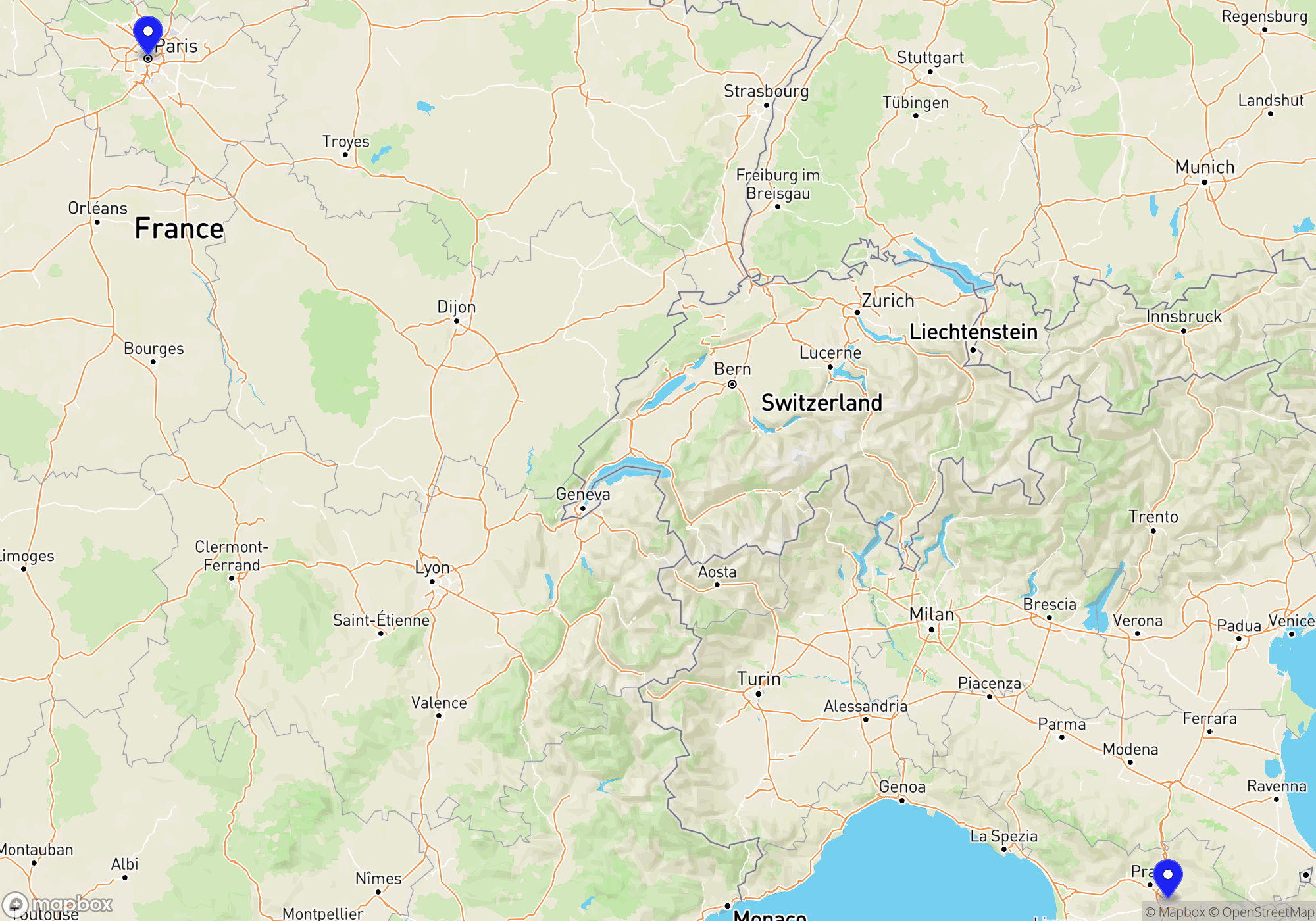
You can buy train tickets directly from the operator or through a reseller. The reseller is typically slightly more expensive (3-5%) but can provide an easier booking experience, especially if you travel with more than one operator.


These operators provide a complete journey either as a direct connection or through their partners. Even if a change of trains is involved, it’s all part of a single itinerary managed by the same train company or its partners, offering a smoother and more coordinated travel experience.


Some operators don’t run direct trains the whole way, but they serve either the departure or arrival station. In many cases, you can combine two of these operators to complete your journey by changing trains along the way. This is often a flexible and budget-friendly way to travel — especially if you’re comfortable piecing together your own itinerary.
Just keep in mind that these are separate journeys, which means a delay on the first leg could cause you to miss the second without automatic compensation or rebooking. It’s a great option for confident travelers who don’t mind a bit of extra planning.




Trenitalia is Italy’s primary train operator, offering a variety of train services that cater to different types of travelers. For journeys from Paris to Florence, Trenitalia primarily operates high-speed Frecciarossa trains, known for their speed, comfort, and efficiency. Frecciarossa trains are designed with a focus on passenger comfort and convenience, featuring modern amenities such as spacious seating, free Wi-Fi, power outlets at every seat, and a variety of seating classes including Standard, Premium, Business, and Executive. Passengers can enjoy onboard catering services through bistro and restaurant cars, with options to purchase snacks, meals, and beverages during their journey. Trenitalia also provides customer support through multiple channels, including their website, helpline, and station service desks, ensuring assistance is readily available for travelers.
FlixBus operates a different model, offering long-distance bus services rather than traditional trains. Known for being a budget-friendly option, FlixBus provides comfortable bus travel across Europe, though it’s important to note they do not directly operate trains from Paris to Florence. Travelers may use FlixBus to reach connecting train services operated by other companies. Buses generally feature amenities such as free Wi-Fi, power outlets at seats, restrooms, and comfortable reclinable seats. Their customer support is accessible via an online help center, phone, and email, making it straightforward for travelers to reach out with questions or concerns.
For a first-time traveler, it’s important to consider the differences between traveling by high-speed train with Trenitalia versus by bus with FlixBus, particularly in terms of travel time, comfort, and convenience. Understanding the amenities and customer support available can significantly enhance the travel experience, ensuring one’s journey from Paris to Florence is pleasant and efficient.
Traveling by train from Paris to Florence can be done using certain rail passes depending on the traveler’s residency. The Interrail Global Pass is valid for this journey as it allows travel across multiple countries, including France and Italy, for European residents. European residents cannot use an Interrail One Country Pass for this journey since it covers travel within a single country only. The Eurail Pass is valid for non-EU residents and can be used for travel between Paris and Florence, covering multiple countries involved in the journey.
Upon arriving in Florence by train, particularly at Santa Maria Novella (SMN) station, you have several options for local transportation. Florence does not have a metro system, but it features an efficient tram network and other modes of transportation. The tram system, known as Tramvia, consists of two lines: T1 and T2. The T1 line connects Scandicci to Careggi-Ospedale, passing through SMN. The T2 line connects the airport with the city center, also stopping at SMN. You can purchase tram tickets at vending machines located at tram stops or via mobile apps. Buses are another option, operated by ATAF, covering a wide network throughout the city. Tickets can be bought at tabacchi shops, newsstands, or ticket machines, and should be validated on board. Taxis are available and can be found at designated taxi stands in the city or can be booked by phone. Note that hail-down taxis on the street may not be possible, and ridesharing services like Uber operate only with high-end and licensed drivers who are not as ubiquitous as in some other cities. Walking is also highly recommended in Florence due to the city’s compact size and pedestrian-friendly historic center, which allows visitors to explore the main attractions conveniently on foot.
Florence, centrally located in Italy, serves as a significant hub in the country’s rail network, providing seamless train connections both domestically and internationally. Domestically, one of the most popular rail routes from Florence is to Rome. High-speed trains such as the Frecciarossa and Italo offer frequent services, typically taking about 90 minutes to travel between Florence’s Santa Maria Novella station and Rome’s Termini station. Another common domestic route is to Milan, with high-speed trains covering the journey in approximately an hour and 40 minutes, linking these two cultural and economic powerhouses. Travelers can also reach Venice with direct high-speed trains, which take around two hours and 15 minutes. For those interested in reaching the coastal areas, trains to Pisa, known for its iconic Leaning Tower, take about an hour.
Internationally, Florence connects to key European destinations through a combination of direct services and connections. To reach Switzerland’s Zurich, travelers can take a direct EuroCity train, which offers a scenic route through the Alps, taking roughly seven hours. Although there are no direct trains to Paris, travelers can reach the French capital by traveling via Milan, where they can transfer to high-speed TGV services. This journey typically totals around nine hours. For journeys to Germany, one can travel through Milan and connect to Munich-bound trains, or opt for a scenic route through the Alps to Geneva and onward. While direct train services from Florence to Austria aren’t available, travelers can connect through Verona or Venice to reach Vienna, utilizing the services of ÖBB, the Austrian national railway.
The best months to visit Florence are typically April to June and September to October. During these periods, the weather is pleasantly mild, making it ideal for sightseeing and exploring the city’s historic sites and beautiful architecture. Spring sees flowers in bloom and lush greenery, while fall offers a tapestry of colors as the city transitions into autumn. Moreover, these shoulder seasons see fewer tourists than the summer peak, so attractions are less crowded and accommodation prices are relatively lower compared to the busier months of July and August.
Arriving by train is quite convenient with fewer crowds during these months, and the scenic train routes are often more enjoyable when the landscape is lush in spring or decked with fall colors. In terms of festivals, late April sees the Explosion of the Cart during Easter festivities, and September has the Festa della Rificolona, a traditional lantern-lit celebration. These events enrich your visit and provide a deep dive into local culture. Hotels and attractions may offer better rates and deal with fewer tourists, allowing for a more leisurely exploration of the city.
When traveling from Paris to Florence by train, it’s essential to pack your passport or national ID card for EU residents as a legally required travel document. Consider including the train tickets or reservation confirmation, and your smartphone loaded with travel apps and entertainment. A lightweight suitcase or backpack with comfortable clothing appropriate for Florence’s climate, along with a travel-sized umbrella and a compact raincoat, would be wise. Pack toiletry essentials following the liquid regulations for easy check-in and a power bank to keep devices charged. Since Italy uses the type C, F, or L plugs, bringing a universal power adapter or a specific adapter for these plug types is essential if you’re traveling from France. Comfortable headphones, a reusable water bottle, light snacks, a travel pillow, and an eye mask can make the train journey more pleasant. Bringing a lightweight guidebook or an e-book loaded onto your device can be handy for exploring Florence. Basic first-aid supplies and any prescription medications should also be included in your packing strategy. Lastly, don’t forget a camera or smartphone for capturing memories.